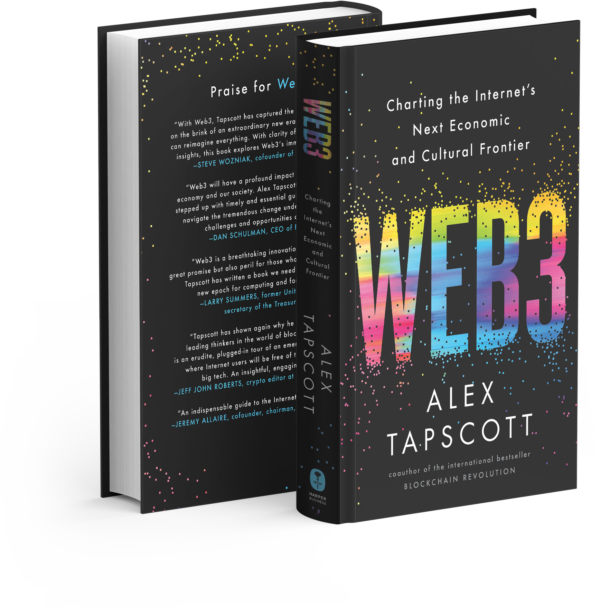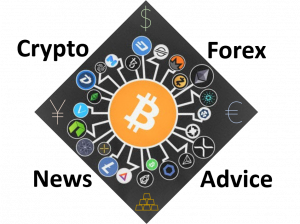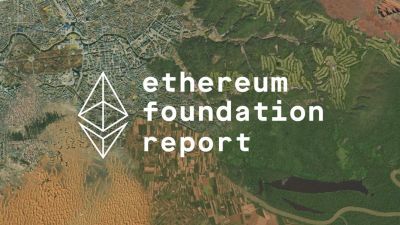Alex Tapscott is a well-known voice in the blockchain and Ethereum space. In 2016, he was co-author with his father, Don, of “Blockchain Revolution,” one of the most influential early books on business blockchain. On September 19 of this year, Alex released a new book, “Web3: Charting the Internet’s Next Economic and Cultural Frontier”. Alex is also a part of the Blockchain Research Institute, which is an EEA member.
Interview by Tom Lyons
Alex, why did you write a book on Web3?
Every so often, a new technology comes along that changes the economic order of things in society in some pretty profound ways. Today, we actually have a number of these technologies. Things like AI, IoT, robotics, AR/VR, blockchain, and Web3. Of all these, I think Web3 is the least well-understood. That is why I wrote the book.

“Web3: Charting the Internet’s Next Economic and Cultural Frontier” by Alex Tapscott is a cutting-edge guide to the next era of the Internet.
Where do you think Web3 is going to have the most impact?
As we lay out in the opening chapters of the book, the primary impact will be on assets, on individuals, and on organizations. Let me explain.
When looking at assets, a lot of people hear about Web3 and think ‘crypto.’ But cryptocurrencies are only one of dozens of new types of tokens being made possible through Web3. We see tokens as containers for value in the same way that a website is a container for information. A token can contain anything of value: money, stocks, bonds, titles or deeds, art, collectibles, or even votes in an election. Because tokens are programmable, they are a tabula rasa for us to imagine anything of value digitally. All industries are going to be impacted by that.
In terms of individuals, in the past, we all made this Faustian bargain where we provided data about ourselves in exchange for access to some Internet service. Web3 basically starts with the premise that you should own your own data and identity. So, it transforms Internet Users into Internet Owners in the sense of owners of their identity and online assets.
Web3 also enables new organizational structures. Ronald Coase famously pointed out that we have companies because bundling everything together inside a firm brings down transaction costs. As technology has evolved, it has become easier and easier to unbundle the firm. That’s why we have companies like Apple today with R&D in California and hundreds and hundreds of subcontractors. Web3 extends that with a toolkit that not only lowers the cost of search and coordination but also the cost of trust.
It is a new platform that allows individuals to collaborate and become owners of the applications or services they’re using or building. In Web3 language, we call this kind of collaboration a Decentralized Autonomous Organization or DAO.
Do you really think DAOs will reshape the organizational landscape?
Yes.
Just look at the companies in Silicon Valley. They have always known that if you want to attract the best people, you need to offer them equity. That made Silicon Valley the Galapagos of the early web, with all these unique conditions to drive evolution and innovation. But this method doesn’t scale globally. With a DAO, anybody who uses an application or service can earn a share of that service by being an early contributor. That means that you can launch on Day Zero with services in 50 different countries. So, I really do believe that DAOs are going to be where a lot of software, networks, and new companies get built.
That doesn’t mean overnight that Exxon Mobil or JP Morgan is going to become a DAO. I just think that going forward, this will be seen as a better way to organize capability and scale. If the corporation was the killer app for the industrial age, I view DAOs as the killer app for this new digital age.
Is there a danger that Web3 gets ‘captured’ by large corporations the way Web2 has?
I think it’s a real risk. The issue is that the user experience of Web3 will always be challenging for a big part of the population. In Web3, if you’re using an application or service, and you’re earning a share of that, that means you’re holding some token, and that token needs to be held in a wallet. And that wallet needs to be protected with a password. And that requires a person to be comfortable with the concept of tokens, wallets, and passwords.
Many people are already comfortable with this, and an ever larger share of the population will be. Part of this is geographic: a lot of people in the Global South and in non-Western countries are already comfortable with this. And part of it is generational: younger people tend to be more comfortable. These are two big tailwinds.
But that doesn’t mean capture isn’t possible.
What use cases do you like for Web3 right now?
One compelling area of innovation in Web3 that we talk about in the book is gaming. That’s mainly because, in gaming, we already have product-market fit for virtual assets. Gamers have been spending billions of dollars on virtual goods for many, many years. The only difference is that these virtual goods are assets that they buy but they don’t actually own. They don’t control them, and they can’t resell them. They don’t participate if the value of the assets goes up.
But I think if you’re going to buy assets, you might as well also really own them, right? And we didn’t really have a medium to express those digital property rights before. But now we do. That’s an opportunity in a market where hundreds of millions of people are already spending billions of dollars buying and selling virtual assets.
And this can carry over to the metaverse. Considering how much time we already spend online, I don’t think it is a stretch to believe that even more of our entertainment, economic activity, and social life will be taking place online when we have an even more immersive environment. But the risk is that we end up with some virtual Disney World, an environment that’s controlled by one or another company.
If we can incorporate digital property rights in the metaverse in the same way that we can do it for gaming environments, I think we can create something that is more akin to a shared virtual space in which individuals can live and thrive in.
Are there industrial use cases for Web3?
Yes. Quite a few.
One we like is DePIN or Decentralized Physical Infrastructure. We look at a number of different case studies in the book. There is the Render network, which allows individuals to rent out their CPUs to TV and film studios for rendering 3D content and earn a native token. There is also the Hive network, which is a decentralized real-time mapping platform.
Hive is interesting. It’s like a crowdsourced version of Google Maps, where individuals can mount a dashcam, gather street-level data, and get paid for it in a token. If the quality can match Google Maps, then this becomes not only interesting for individuals but also for enterprises. Companies like UPS or FedEx would be more than happy to mount dashcams on their trucks and earn while contributing to the mapping network. They could also save the cost of the Google Maps data they are currently paying for through the API.
You are very close to the Ethereum ecosystem. Do you think – as we at the EEA maintain – that Ethereum is “ready for business”?
There are developments that I think are making business adoption of Ethereum easier.
For one, I find it remarkable how well Ethereum has been able to continue to improve upon itself, even though it’s an open-source network that has no central authority governing it. The Merge is a great example. I liken it to swapping out the engines on a 747 traveling 600 miles an hour over the ocean while carrying two billion dollars worth of cargo, all without upsetting the drink cart or the in-flight entertainment system. This kind of success is reassuring to enterprises.
It’s also hard to overstate how important the move to Proof-of-Stake has been. Many large corporations have stringent ESG policies. And these companies have been reluctant to do anything on Ethereum or Bitcoin because of the carbon footprint of Proof-of-Work mining. With Proof-of-Stake, they no longer have this concern.
I also think the rise of NFTs has been an important development in terms of enterprise adoption just because it’s provided an easy playing field to start toying around. If you look at a lot of these projects from Starbucks, PepsiCo, or LVMH, they’re interesting, but they’re not about reinventing a business. What they are doing is becoming familiar with the core concept and the idea of Web3.
The crypto bear market has been an enabler of enterprise experimentation, too, simply because without the noise of the bull market, enterprises have more room to experiment, to fail, to invest, and just to do stuff outside of the harsh glare of the public eye.
There may have been a slowdown in enterprise activity when it comes to financial applications. But when it comes to technology investment in innovation around Web3, the enterprise side of the story continues to be really robust.
What recent technological developments in Ethereum do you think are significant from an enterprise adoption perspective?
I think that account abstraction is a really important concept. Today, if you have a private key and you lose it, you lose all your assets and all your information. That’s not a system a lot of people will want to be involved in, certainly not businesses. Account abstraction offers a form of social consensus, of key reclamation, that’s really easy to understand and that allows you to protect your assets. That’s something that can be very powerful for onboarding a lot more users.
I’m also really interested in the introduction of zero-knowledge technology and just the idea of zero-knowledge in general. I think that is critical. People often think that blockchains are private because you don’t have to register on them, but of course, we know that isn’t true. Transactions can be traced. Being able to prove that something happened without revealing the identities of the parties or the value involved will find a lot of different applications in a lot of industries. For businesses using blockchain, it adds privacy, usability, and scalability.
I also think that all the rollups on Ethereum that connect to Mainnet are very good for Ethereum. Some people say that if there is more value trading hands at the L2 level, there will be less demand for the L1. I don’t think it works like that. I think, in the end, that anything that makes the Ethereum ecosystem more valuable is good for Ethereum. And rollups do that.
How do rollups fit into the overall Ethereum picture?
One way to think about it is to see the Mainnet as the dispute resolution mechanism. If you and I have a contract, which is what an L2 is, then as long as everything works out, we don’t need the L1. But if there is a dispute, that’s where the dispute resolution process comes in. In the non-blockchain world, we would go to court. In Ethereum, we go to the Mainnet.
Another way is to think of Ethereum as the electrical grid of a city. The more houses and businesses that are connected to the grid, the more electric vehicles that charge from it, the more demand there is for the electricity from that grid. But you can’t just have energy flowing unregulated through the system. You need substations located throughout the city to regulate the flow and bring it to businesses and individual homes.
In this analogy, Ethereum is the main grid, and the L2s are the substations. They are an important part of the scalability story.
In our last report, we also maintained that there has been a major shift towards public blockchain in the business and enterprise communities. Do you agree?
Yes. I believe that is a combination of the fact that public blockchains have become more useful and private chains have proven themselves to be not always so useful.
When we wrote “Blockchain Revolution” in 2016, many companies were looking at the technology and thinking ‘this is interesting, but it’s not ready for the enterprise.’ And so you had the rise of private blockchains. Since then, a lot of water has gone under the bridge. Many of the private consortia have failed, and the main chain has become much more robust.
Today, you have a lot of Fortune 500 companies who feel comfortable launching projects on Ethereum. Paypal, MasterCard, Starbucks, and companies like these are doing stuff via L2s or Mainnet. It is like in the early days of the Internet when people liked the idea of being able to share information, calendars, documents, and so forth, but they didn’t like the idea of being open on an anarchic web. So, they built their own Intranets. And those Intranets still exist today.
But most of the value that was created from network effects occurred on the public Internet. And as the public Internet gained users, it became more robust for enterprises. And I see something similar happening with Ethereum.
Where do you see adoption going in the next 3-5 years?
I think Ethereum continues to be the leading L1. I don’t think that changes. I do think there are a lot of things that need to be improved upon. The user experience, the wallet experience, account abstraction, and all the things that just make it easier for the average person to use these tools will grow the utility and value of the underlying platform.
If the first wave of adoption was in finance with DeFi, I think the next wave will come from all sorts of different places – from social, from creative industries, from gaming, from infrastructure. By the time that happens in this next cycle, and I think we are about to embark upon it, the technology will be ready for primetime.
The post “In this next cycle, the technology will be ready for primetime.” – Interview with Alex Tapscott appeared first on Enterprise Ethereum Alliance.
Go to Source
Author: Tom Lyons




